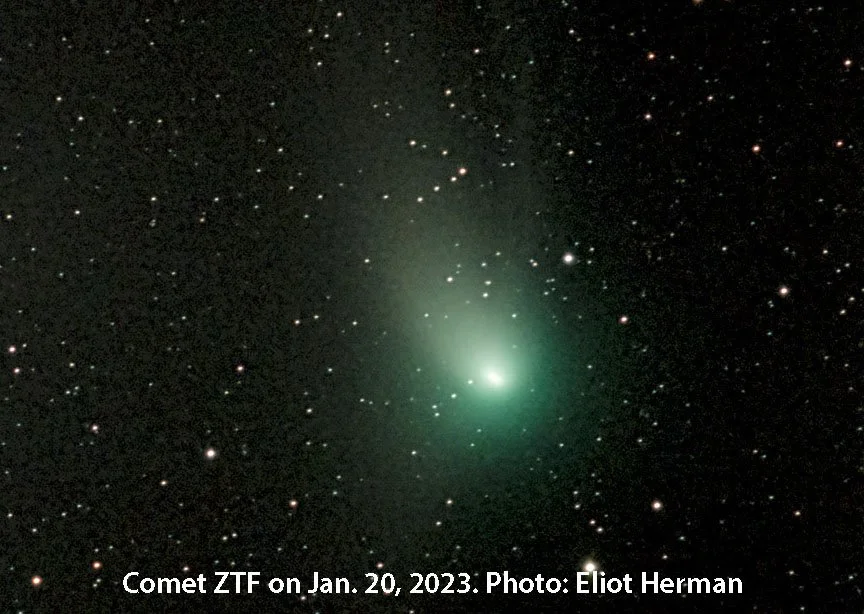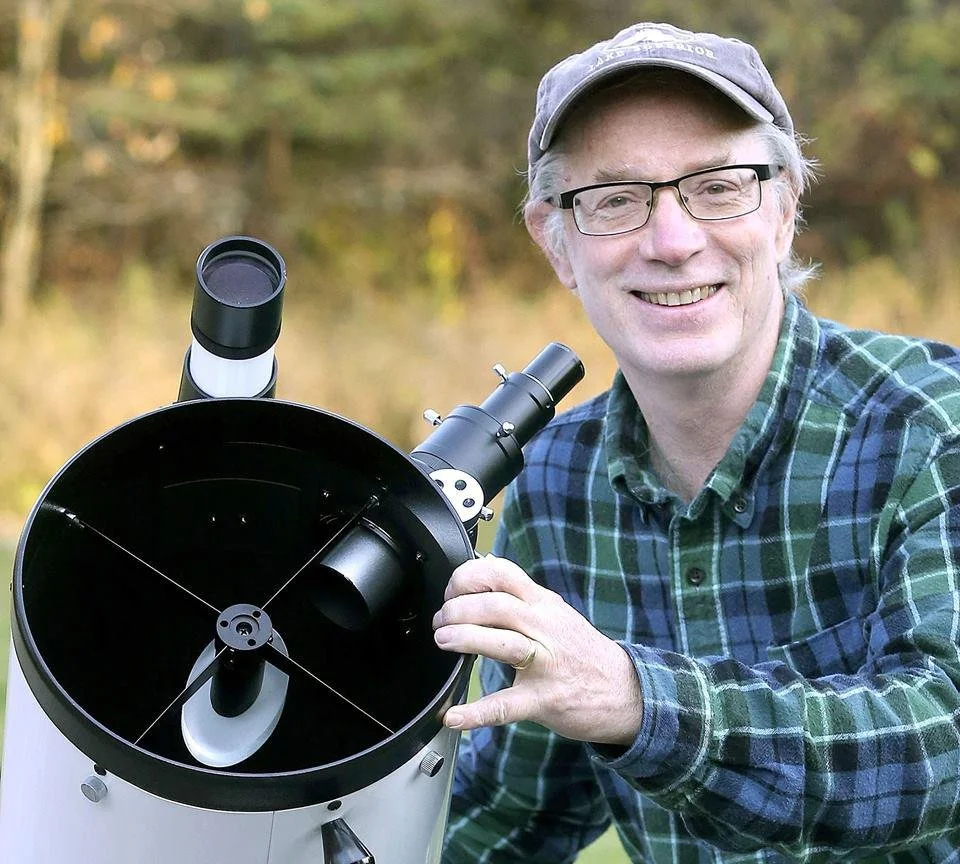February 2023 Night Sky Calendar
February is a transition month for the constellations. Although the winter groups still rule the roost, the first hints of spring appear low in the eastern sky later in the month, led by the sparkling orange star Arcturus in the constellation of Boötes the Herdsman. Come May, this peachy luminary will shine high in the southern sky.
In the western sky, Saturn is now lost in the solar glow and won’t return to view until early April at dawn. Venus and Jupiter tantalize as they gradually draw together in preparation for a very close conjunction next month. It will be fun to watch their separation narrow night by night.
If you haven’t yet seen Comet ZTF, named for the Zwicky Transient Facility in California where it was discovered, you still have time. It’s brightest early in the month just about the time the moon gets in the way. Darn! But starting about Feb. 7, we’ll see it again in a moonless sky. The comet gradually fades after that but should remain visible in binoculars from a fairly dark sky through about Feb. 20.
Events:
Feb. 1 – Comet ZTF (C/2022 E3) should be at its brightest and visible as a wedge-shaped, fuzzy glow in binoculars with possibly a short tail. I will post a map on Jan. 31 in my Astro Bob blog (astrobob.areavoices.com) to help you find the comet.
Feb. all month – Watch Venus (the lower and brighter one) and Jupiter gradually get closer during the month. Both appear in the southwestern sky about an hour after sunset. Their separation shrinks from 29° (three fists at arm’s length) on Feb. 1 to just 1° by month’s end.
Feb. 5 – Full Snow Moon
Feb. 10 – Use binoculars to spot fuzzy Comet ZTF just 1.5° to the upper left of Mars. They’ll both sit together in the same field of view. Mars is the bright, red-colored “star” in Taurus about one fist to the left of the Dipper-shaped Pleiades star cluster also known as the Seven Sisters.
Feb. 13 – Last quarter moon
Feb. 20 – New moon
Feb. 22 – Slender evening moon has a close conjunction with Jupiter with Venus nearby. Watch this beautiful gathering during evening twilight.
Late Feb. – The brilliant orange-red star Arcturus, harbinger of spring, rises in the northeastern sky around 9:30 p.m. local time. Look for it below the Big Dipper’s Handle.
Feb. 26 – Half-moon to the left of the Pleiades star cluster
Feb. 27 – First quarter moon. Moon and Mars in conjunction
Bob King is an amateur astronomer, author, and passionate educator. He served as a photographer and photo editor at the Duluth News Tribune for 39 years and taught at the UMD planetarium. Bob’s work had a great impact on Voyageurs National Park. To achieve International Dark Sky Park certification, the park was required to host dark sky education events. Through the Night Sky Explorer webinars, the Conservancy was able to fulfill this component and help secure the certification for Voyageurs National Park. We can’t thank Bob King enough for sharing his talents and knowledge with the Conservancy community to support dark sky preservation.





